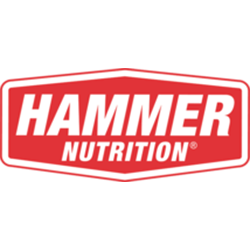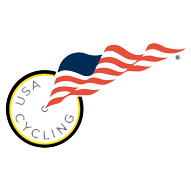Bicycling is a wonderful activity and a great sport. It is a low impact sport and helps develop cardiovascular fitness and maintain your general health. The knee is critical in the cycling motion so you must be very careful and take immediate action should you develop any knee pain with cycling.
The knee is a complex joint with a built in rotational component and the repetitive motion of pedaling occurs hundred-of-thousands of times with cycling. The joint reaction forces that develop can put strain on the muscles, tendons, and the cartilage of the knee and over time can create injury that leads to pain. The causes can be complex and the pain can be frustrating. What should you do if you begin to develop knee pain when cycling? The answers to the following questions will help you to determine the cause of the pain and develop a solution:
Location of the Pain
The first thing to consider is the location of the pain. Do you feel your pain on the front, inside, outside or back of your knee? The location of the pain corresponds to a particular structure and also provides clues to the solution for the problem.
Timing of the Pain
Second, when do you develop the pain? Does it occur at the beginning of a ride, after you’ve been riding for 20min, 30min, or 4 hours, or does it only occur when you are sprinting or climbing steep hills? Does the pain go away after you stop riding or does it continue to hurt with normal daily activities or ache at night or when sitting for a long time?
Relieving Factors
Third, what makes the pain feel better? Does it go away if you use an easier gear or ride a different bike? Is it worse when it’s cold and better when you are warm?
History of Knee Pain
Another important question, have you ever had knee pain before? What were the factors surrounding your prior episode of pain? What did you do then to help your problem? What worked? What didn’t help?
The most common location of knee pain is in the front (anterior) of the knee, around the knee cap (patella). The patella tracks in a groove formed by the femur (thigh bone) and forms the patellofemoral joint. If anything alters the alignment of this joint, the patella can track abnormally and begin to rub the cartilage on the undersurface which causes pain. This is knows as ‘patellofemoral syndrome’ (PFS). There are numerous resources on the internet available if you wish to read more about the details of PFS. The solution is to try and find why the patella is tracking abnormally.
So what if you have pain on the sides of your knee or in the back of the knee? Pain on the outside of the knee is most commonly an Iliotibial band friction syndrome (ITBS). The iliotibial band is a long tendon running along the side of your thigh and can rub over the side of your knee. This can often occur in young athletes who have recently been through a large growth spurt. It is critical to increase you stretching program, particularly focusing on the ITB. Often time a ‘foam roller’ can be used to help lengthen and improve the flexibility of the ITB which helps reduce the friction across the joint. Pain on the inside of the knee most commonly is Pes Anserine bursitis, which is inflammation of a friction reducing fluid filled sack where the hamstring tendons attach on the inside of your tibia (shin bone). Pain the back of the knee is most commonly a hamstring tendonitis, which is inflammation on the attachments of the hamstring muscles into the tibia. The corrections for these problems are similar to PFS and involve careful inspection of your position on the bike, consideration of your own alignment and anatomy, and alterations in your training program and cycling technique.
Steps to helping your knees
- Proper Bike Position: The number one cause is that you are not positioned properly on the bike. Even a small alteration in a rider’s position, amplified thousands of times as the knee flexes and extends during the pedaling motion can produce big problems. The most common causes are having the seat to low, having the cleats mis-aligned or having crank arms that are too long. Be sure to check with your coach or see a trained professional to get your position on the bike dialed in.
- Another common cause can be your own anatomical alignment. If you have different leg lengths or problems with the arches of you feet, or muscles/tendons that are too tight you may still have problems even when you are seemingly in the right position on a bike. The use of shims or orthotics can help, but usually you will want to check with a Sports Medicine physician who is knowledgeable about cycling first. For young cyclists who have gone through a growth spurt, you can have tight muscles, particularly the quadriceps (front of thigh) and hamstrings (back of thigh), which can contribute to the pain. A good stretching program can also be very helpful and should be incorporated into your training program.
- Ice cup massage works great. Fill a small paper cup with water and freeze it. Pull the top half of the paper off, then holding the paper on the bottom; invert the ice cup and massage the ice over the sore spot on your knee.
- Medications, such as ibuprofen or naproxen, are anti-inflammatories and can help relieve pain and swelling when the knee is acutely injured. It is important that you always use these medications appropriately and safely. Some nutritional supplements may be helpful both in relieving the pain and perhaps even in decreasing the loss of cartilage, which is the protective layer of tissue covering the bones over joint surfaces. Although there are many supplements on the market, there aren’t many good scientific studies confirming there positive effects. There have been some decent studies showing some benefit from the use of glucosamine. The beneficial use of these substances in young people however remains to be proven. There really is no substitute for good nutrition and the key is a having a good, healthy diet-appropriately balanced for your body and your training program.
- Another key factor is your training program. Too much training too early in the season, climbing lots of steep hills or using too big a gear and pedaling at low RPMs can put excessive forces on the knee which can cause problems. Be sure to check with your coach because careful modifications to your training program and your cycling technique may be necessary.
- Weather and the timing of your season can contribute to the development of knee pain. In the winter, after a break off the bicycle, one can sometimes train too hard, too soon. Remember to gradually increase your mileage and the intensity of your efforts in the early season to give you body time to adjust to the stresses of a vigorous training program. You should also always wear well-fitting knee warmers or tights to keep your knees warm during the cold season months. I generally recommend you cover your knees when riding in temperatures less than 60 deg. F.
Bicycling is a great recreational activity and a great competitive sport. The benefits of cycling are numerous, but you should never ignore knee pain or just try to work through it and hope it will go away. Think about all the important factors we’ve discussed and talk to your coach so you can remedy the problem before it becomes serious. If your knee pain persists despite trying all the necessary steps then you should definitely be seen by a Sports Medicine physician with expertise in treating cyclists.














